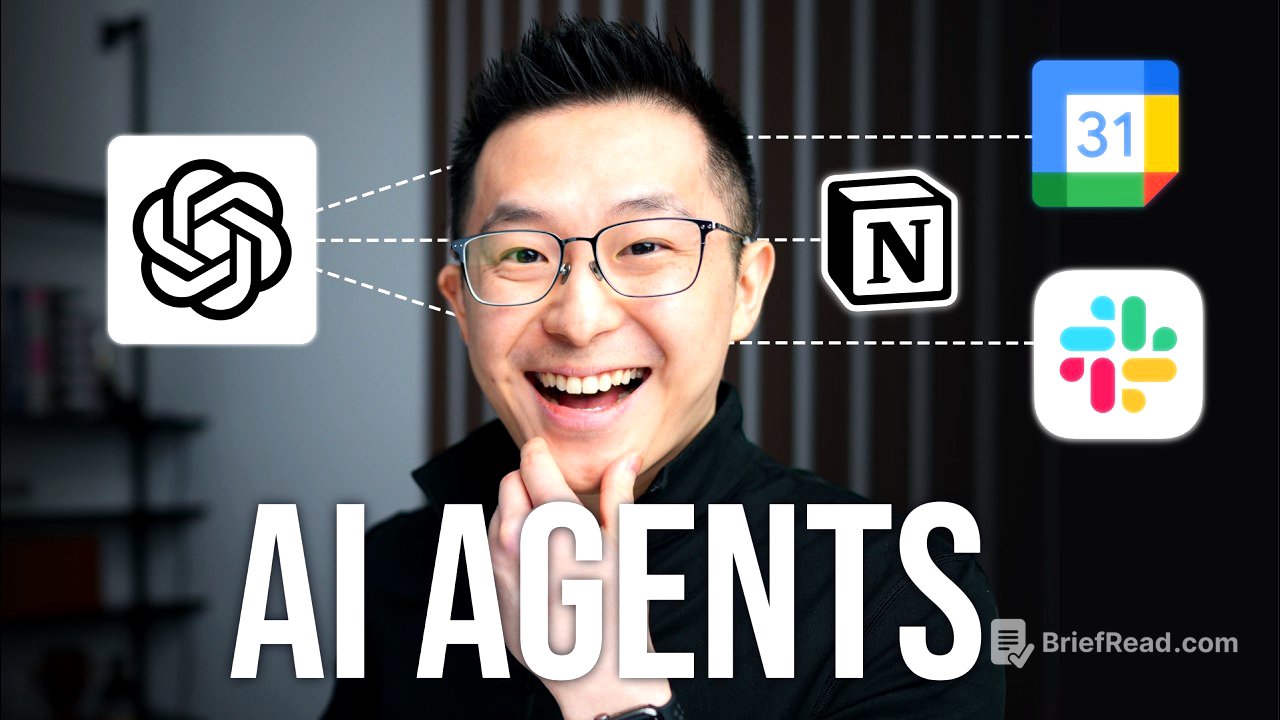TLDR;
This video explains the differences between LLMs, AI workflows, and AI agents, using real-world examples to illustrate each level. It highlights that LLMs are passive and have limited knowledge, AI workflows follow predefined paths set by humans, and AI agents can reason, act, and iterate autonomously to achieve a goal.
- LLMs (Level 1) generate text based on input but have limited knowledge and are passive.
- AI Workflows (Level 2) follow predefined paths set by humans, using tools and APIs to achieve specific tasks.
- AI Agents (Level 3) reason, act, and iterate autonomously, making decisions and using tools to achieve a goal without human intervention.
AI vs. AI Agents [0:00]
The video introduces the concept of AI agents, distinguishing them from other AI tools. It aims to provide a clear explanation for individuals with limited technical backgrounds who use AI regularly. The video outlines a learning path that builds from basic concepts like chatbots to more complex AI workflows and, finally, AI agents, using practical examples.
Level 1: LLMs [1:04]
Large Language Models (LLMs) are the foundation for AI chatbots like ChatGPT, Google Gemini, and Claude. LLMs excel at generating and editing text based on input. They operate by receiving an input from a user and producing an output based on their training data. However, LLMs have limitations, including limited knowledge of proprietary information and a passive nature, as they only respond to prompts.
Level 2: AI Workflows [2:17]
AI workflows involve a predefined path for LLMs to follow, set by a human. For example, an LLM can be instructed to search a Google Calendar for personal events before responding to a query. However, AI workflows can only follow these predefined paths, limiting their flexibility. Retrieval Augmented Generation (RAG) is a type of AI workflow that allows AI models to look up information before answering. The video uses an example of creating social media posts from news articles using make.com to illustrate how AI workflows operate with predefined steps.
Level 3: AI Agents [5:26]
AI agents differ from AI workflows in that they can reason, act, and iterate autonomously. The key difference is that the AI agent replaces the human decision-maker. The AI agent reasons about the best approach to achieve a goal, takes action using tools, and iterates to improve its output. The video highlights the ReAct framework, where AI agents must reason and act. An AI agent can critique its own output and refine it based on best practices, autonomously improving its performance.
Real-world Example [7:48]
The video references a demo website created by Andrew, which illustrates how an AI vision agent works. The AI agent reasons about what a skier looks like and then acts by looking at video footage to identify skiers, index the clips, and return them to the user. This example demonstrates how AI agents can perform tasks autonomously without human intervention.
Summary [9:10]
The video summarises the three levels discussed: LLMs, AI workflows, and AI agents. LLMs respond to input with an output. AI workflows follow a predefined path set by a human. AI agents reason to determine how best to achieve a goal, take action using tools, observe the interim result, and iterate as needed to produce a final output. The key difference is that the LLM is the decision-maker in the AI agent workflow.
